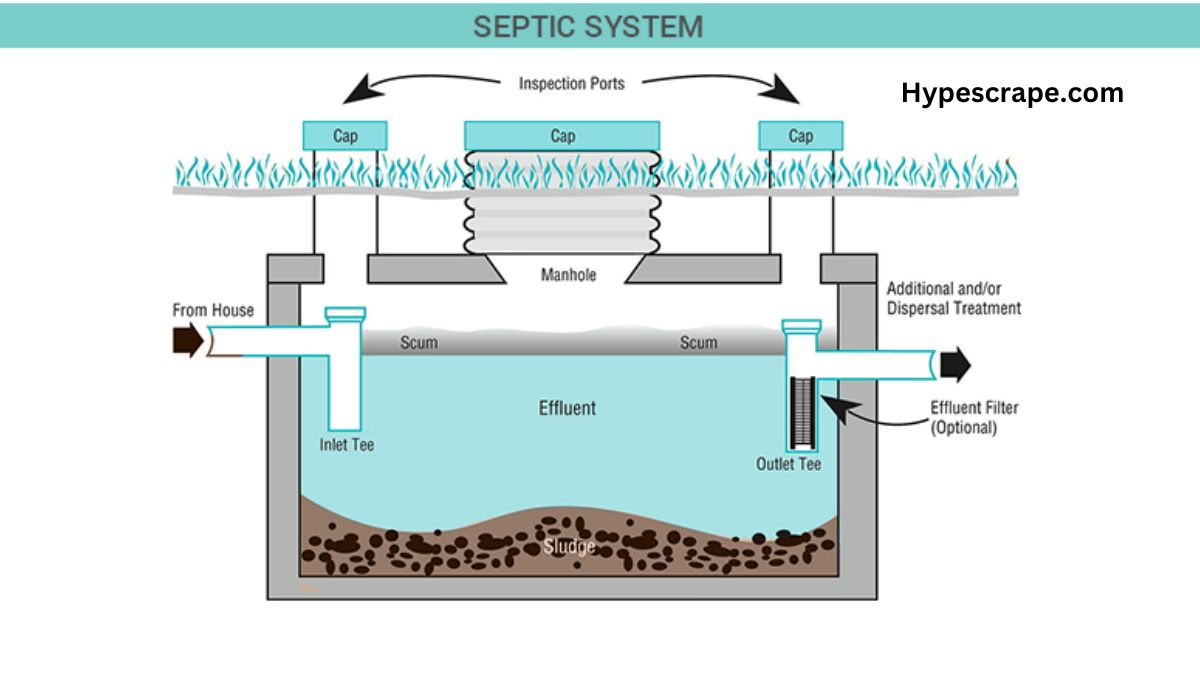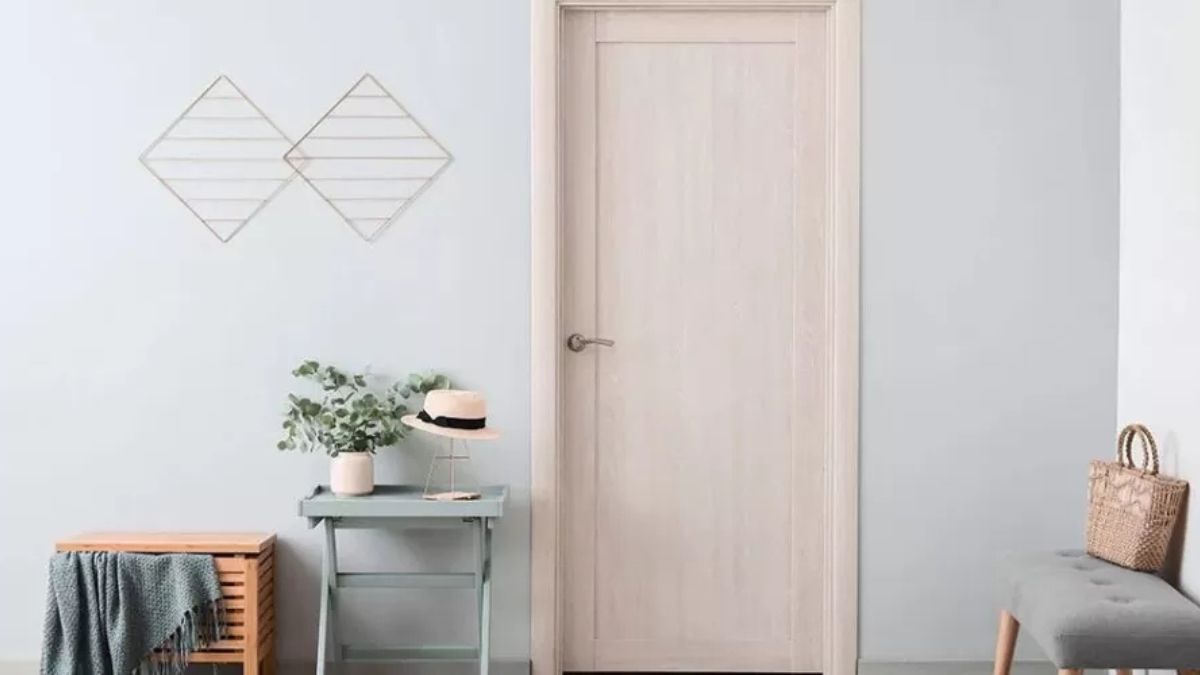HOME IMPROVEMENT
Efficient Septic System Management: A Guide to Long-Term Solutions

Though often overlooked, Septic systems are integral to many rural and suburban households. They process and dispose of wastewater efficiently and environmentally friendly. Without proper management, septic systems can malfunction, leading to many unpleasant and costly issues. This guide aims to provide homeowners with practical solutions for efficient septic system management, focusing on maintaining long-term functionality and reducing environmental impact.
Understanding Septic Systems
The primary purpose of a septic system is to manage and treat household wastewater when municipal sewer systems are unavailable. A typical system consists of a septic tank and a drain field. The tank contains bacteria that neutralize organic material, while the drain field further treats the effluent as it percolates through the soil. For optimal performance, regular septic services ensure these systems continue to operate efficiently and effectively, preventing costly malfunctions.
Importance of Regular Maintenance
Regular septic system maintenance is crucial to ensure its longevity and efficiency. While the maintenance routine may vary depending on household size and usage, standard practices should be followed. One of the most critical aspects of maintenance is septic tank pumping. This process helps to remove sludge and scum that accumulate in the tank over time, preventing overflow and potential system failure. Experts recommend pumping the septic tank every three to five years, but frequency may vary depending on usage and household size.
Signs of Potential Failure
Understanding the signs of a failing septic system can save homeowners from dealing with significant issues later. Some common indicators include persistent foul odors near the drain field or septic tank, slow-draining fixtures in the house, wet areas around the septic system, and unusually lush grass growth in the drain field area. Addressing these warning signs promptly can prevent minor issues from escalating into costly repairs and environmental hazards.
Advanced Technologies in Septic Systems
Recent advancements in septic system technology have greatly enhanced their efficiency and sustainability. Aerobic treatment units introduce more oxygen into the waste treatment, promoting faster and more effective waste breakdown. Other developments include advanced filtration systems that reduce nitrogen levels and mitigate harmful runoff. These innovations result in improved system performance and a reduced environmental footprint.
Sustainable Practices for Environmental Impact
Sustainable practices play a significant role in reducing the environmental impact of septic systems. Simple actions can significantly contribute to system efficiency and longevity. Using water efficiently, being mindful of the chemicals and substances that enter your drains, and regularly maintaining tanks and drain fields are all vital steps. For example, opting for biodegradable household cleaners over harsh chemicals can minimize disruptions to the bacteria in your septic tank. Additionally, aerating the home environment and the septic field can help keep the system balanced.
Conclusion
Proper septic system management is not just about ensuring the smooth operation of household wastewater treatment—it is about protecting the environment and public health. Homeowners can ensure their septic systems’ longevity and efficiency by adhering to regular maintenance schedules, being vigilant towards signs of system failure, investing in modern technology, and adopting sustainable practices. A well-maintained septic system contributes positively to the environment and can lead to significant cost savings over time, proving as rewarding as any home improvement effort.
HOME IMPROVEMENT
Rooms You Should Focus on First When Renovating Your Home

Renovating your home can be an exciting and daunting task. Whether you’re looking to upgrade a single room or transform the entire house, it’s crucial to approach the process strategically. Focusing on the right areas first will not only make the renovation process smoother but also provide the most significant impact on the comfort and value of your home.
If you’re wondering which rooms to tackle first, here are the essential spaces you should prioritize in your home renovation journey.
1. Kitchen
The kitchen is considered the heart of the home. It’s where families gather, meals are prepared, and memories are made. Therefore, renovating the kitchen should be at the top of your list. An updated kitchen can enhance both functionality and aesthetics, making it a great investment that boosts your home’s value. Focus on upgrading the cabinets, countertops, and appliances. Adding a fresh coat of paint and updated fixtures can also make a huge difference without breaking the bank.
Additionally, consider the layout of the space. Open-plan kitchens are trendy and functional, but if you’re working with a smaller area, you may want to consider maximizing storage and creating an efficient work triangle between the stove, sink, and refrigerator.
2. Bathrooms
Bathrooms are another area that can benefit from a renovation. Whether it’s a small powder room or a master ensuite, bathrooms see daily use and can quickly become outdated or worn out. Renovating a bathroom can transform your daily routine into a more relaxing and enjoyable experience.
Begin by updating outdated fixtures, including faucets, lighting, and mirrors. If you’re looking for a more extensive renovation, you might want to consider installing new tiling, replacing bathtubs or showers, and adding smart technology for better convenience.
If you’re in the Ampthill area and are looking for professional bathroom renovations, consider bespoke bathrooms in Ampthill for customized solutions tailored to your style and needs. An updated bathroom not only adds comfort but can also increase the overall appeal of your home.
3. Living Room
Your living room is where you entertain guests, relax with family, and enjoy downtime. This room serves as a multi-functional space that deserves attention during your renovation. Start by enhancing the layout and updating furniture that might be outdated or worn. A modern fireplace, updated flooring, or fresh paint can dramatically change the look and feel of the room.
If you’re looking to make your living room feel larger, consider incorporating light colors, mirrors, or multi-functional furniture. Open shelving or built-in storage can also help with organization, while statement pieces like a new rug or artwork on the wall can add a personal touch.
4. Bedrooms
After a long day, you want a bedroom that feels like a peaceful retreat. Renovating your bedroom should focus on creating a restful atmosphere. Start by upgrading your bed, as it is the focal point of the room. Adding fresh linens, new furniture, or a custom-built wardrobe can create a more organized and comfortable space.
Consider the lighting in your bedroom as well. Soft, ambient lighting creates a calming environment for rest. You can also invest in better insulation or soundproofing to ensure that the room remains peaceful and quiet.
Conclusion
Renovating your home can be a rewarding experience when done strategically. Start by focusing on high-traffic areas, like bathrooms and the kitchen, followed by social spaces like the living room and entryway. Don’t forget about personal spaces like bedrooms and unused areas like basements or attics. Happy renovating!
HOME IMPROVEMENT
Rebated vs Swing Door: A Detailed Comparison for Modern Interiors

Choosing the right door for your home can transform not just a room, but the entire feel of your space. Among the popular options are rebated doors and swing doors—two styles that offer distinct features and aesthetics. Each has its own charm and functionality, making them worthy contenders in modern interior design. Whether you’re renovating or building from scratch, understanding these two types will help you make an informed decision that aligns with your style and needs. Let’s dive into what sets rebated doors apart from swing doors and uncover which is best suited for contemporary interiors!
Pros and Cons of Rebated Doors
Rebated doors offer a sleek and modern look, blending seamlessly into contemporary interiors. Their design includes a recessed edge that allows for better insulation and soundproofing. This feature is particularly beneficial in multi-room homes or apartments.
On the downside, installation can be tricky. It often requires precise measurements to ensure a perfect fit within the frame. If not done correctly, it can lead to gaps that diminish their aesthetic appeal.
Another advantage is security; rebated doors are generally more resilient against forced entry due to their construction. However, they may require specialized hardware for locks and hinges, which can increase overall costs.
Maintenance tends to be straightforward as well, but any warping over time could necessitate repairs or replacements sooner than anticipated. Balancing these pros and cons helps determine if rebated doors align with your specific needs and lifestyle choices.
Pros and Cons of Swing Doors
Swing doors offer a timeless charm and practicality, making them a popular choice in various settings. One major advantage is their ease of use. They can be pushed or pulled open with minimal effort, which is especially beneficial in high-traffic areas.
Another pro is the versatility in design. Swing doors come in numerous styles and finishes, allowing homeowners to match them seamlessly with their interior decor.
On the downside, swing doors require ample space to operate fully. This can be restrictive in smaller rooms or tight hallways where movement may be impeded.
Additionally, they might not provide as much sound insulation compared to other door types like rebated doors. If privacy is a concern, this could be an issue worth noting for certain environments.
Swing doors are susceptible to drafts if not properly fitted, potentially affecting energy efficiency over time.
Factors to Consider when Choosing Between Rebated and Swing Doors
When selecting between rebated and swing doors, several factors come into play. First, consider the space available. Rebated doors are often more suitable for smaller areas due to their flush design, while swing doors require additional clearance.
Next is functionality. Think about how frequently the door will be used. If you’re looking for a door that provides easy access and can handle high traffic, a swing door might be your best bet.
Aesthetics also matter significantly in modern interiors. Rebated doors offer a sleek and minimalist look that blends seamlessly with contemporary designs. In contrast, swing doors provide classic charm but may disrupt clean lines.
Assess your budget and installation preferences. The complexity of each type can influence both cost and labor involved during installation. Understanding these aspects will guide you on which style fits best with your vision.
Design Aesthetics: Which Door Style is Best for Modern Interiors?
When considering design aesthetics, the choice between rebated and swing doors can significantly impact the overall look of a modern interior. Rebated doors offer a sleek, minimalistic appeal. Their flush appearance creates clean lines that complement contemporary decor.
On the other hand, swing doors boast versatility in style and functionality. They can be ornate or simplistic, adapting to various themes while adding depth to spaces. The way they open adds an element of dynamism.
Color and material also play crucial roles in both options. Matte finishes on rebated doors enhance their understated elegance, while gloss or bold hues on swing doors make striking statements.
Your selection should align with your existing décor and personal taste. A thoughtful door choice not only serves its functional purpose but also elevates the entire room’s ambiance.
Installation Process and Cost Comparison
The installation process for rebated doors typically involves precise measurements and carpentry skills. These doors are designed to fit flush within the wall, requiring a more complex setup that may include framing adjustments. As a result, professional installation is often recommended.
In contrast, swing doors offer a more straightforward approach. They usually come with standard frames that can be easily installed by DIY enthusiasts or professionals alike. This simplicity reduces labor costs and time investment.
When considering costs, rebated doors tend to be pricier due to their intricate design and the need for skilled labor during installation. Swing doors generally fall in a lower price range, making them an attractive choice for budget-conscious homeowners looking for convenience without sacrificing style.
Each option has its financial implications, so assessing your specific needs will guide you toward the best decision.
Maintenance and Durability of Rebated vs Swing Doors
Rebated doors are typically more durable due to their design. The overlapping edges help protect against wear and tear, making them less susceptible to damage from daily use.
Their tight seal also minimizes exposure to moisture and dust, which can be a concern in modern interiors. When properly maintained, rebated doors can last for years without showing significant signs of aging.
On the other hand, swing doors offer easy access and versatility but may require more frequent upkeep. Their hinges are prone to wear over time, especially if they’re used heavily.
Regular lubrication is essential to keep them functioning smoothly. Additionally, swing doors can suffer scratches or dents since they often protrude into living spaces.
Considering these factors will guide you in selecting the right option based on your lifestyle needs and desired longevity.
Conclusion: Choosing the Right Door for Your Modern Interior Design Needs
Choosing the right door for your modern interior design needs can have a significant impact on both aesthetics and functionality. A rebated door offers a sleek, minimalist look that seamlessly integrates into contemporary spaces while providing excellent sound insulation. On the other hand, swing doors boast versatility and ease of use, making them ideal for high-traffic areas.
Consider factors such as your space layout, style preferences, and maintenance requirements when deciding between these two options. Both styles come with their own set of advantages and drawbacks; thus, understanding how each aligns with your vision is crucial.
Whether you lean towards rebated or swing doors will depend on what complements your unique interior environment best. Take time to evaluate not only the visual appeal but also practicality in everyday use—this way you’ll make an informed choice that enhances your living or working space beautifully!
HOME IMPROVEMENT
How to Make Your Apartment Feel Like Home

Introduction
Moving into a new apartment is a thrilling experience. Yet transforming it into a welcoming sanctuary is the true goal. An apartment should be more than just a place to live; it should reflect your personality and provide comfort, making it your haven from the bustling world outside. With creativity and effort, you can easily make your apartment feel like home, where every corner resonates with warmth and familiarity. This transformation focuses on enhancing comfort and functionality so that your living space becomes a reflection of who you are, offering solace and a place to thrive.
Personalize Your Space
The first step toward making your apartment feel like home is personalization. Incorporate meaningful items and reflect your tastes. Think of cherished photos, artwork, or heirlooms that tell your story. These touches create a familiar and inviting environment. Even if you’re living in Seattle rentals with a view, personalizing your space can transform it from a generic apartment into a cozy, personalized abode. These personal touches—like that photo from a family trip or a painting from a local artist—inject personality into the space, making it unmistakably yours.
Incorporating elements that resonate with your hobbies and interests, such as books, plants, or travel souvenirs, adds depth and character to your home. Mixing textures and colors that you love can also create a welcoming atmosphere that feels uniquely comfortable. If rental restrictions limit you, use removable wall decals, furniture covers, or decorative accessories to infuse your style without making permanent changes. Adding cozy lighting through floor lamps, candles, or string lights can set the mood and enhance the warmth of the space. Ultimately, personalizing your apartment boosts your comfort and makes it a true reflection of who you are, allowing you to create a sanctuary that feels just right for you.
Optimize Lighting
Lighting plays a crucial role in establishing the mood within your living space. To create a warm and inviting atmosphere, consider using a mix of ambient, task, and accent lighting. Floor and table lamps with adjustable settings can provide gentle illumination conducive to relaxation, while task lighting in kitchens and study areas can enhance functionality. String lights and lanterns add whimsical charm, perfect for cozy evenings or entertaining guests. Adjust lighting temperatures to suit different times of the day, using more astonishing lights for when you need to focus and warmer tones for winding down.
Creative Use of Textiles
Textiles like curtains, rugs, throws, and cushions bring warmth and coziness, making an apartment feel snug and inviting. Layering different textures can add depth and interest to your rooms. Choose plush throws in soft materials like wool or cashmere for your couch, and opt for a colorful rug to delineate spaces, especially in open-plan apartments. Fabric choices, such as linen or cotton, can offer comfort and elevate the aesthetic, adding to the overall homeliness of the space. Curtains can be functional and decorative; heavy materials provide privacy and insulation, while sheer drapes can soften the sunlight and add elegance.
Functional Furniture
Furniture should not only cater to your design preferences but also serve the practical needs of your household. Consider multifunctional pieces, such as a sofa bed for guests or a coffee table with built-in storage, to use your space best. Investing in functional and comfortable furniture ensures that your apartment supports day-to-day activities and moments of relaxation, creating an environment where you can unwind and entertain effortlessly. Look for accessories like ottomans that double as seating and storage or dining tables that can extend for larger gatherings. These elements help create an adaptive and welcoming home suitable for any occasion.
Embrace Color
Color is an expression of personality and can drastically change the feel of your home. While neutral tones provide a calming backdrop, splashes of color can energize the setting. Consider painting a feature wall to add character or introducing colorful accents through art and decor items. Experiment with hues that resonate with you, whether calming blues, vibrant yellows, or earthy greens, to create spaces that reflect your spirit and enhance your mood. Incorporate seasonal colors to keep your home fresh, or highlight vibrant inner-city vibes with bold artwork and decor that stands out against the urban landscape.
Decorate with Nature
Incorporating natural elements into your apartment has both aesthetic and health benefits. Houseplants like succulents, ferns, or peace lilies can purify the air and boost your mood with vibrant greenery. Additionally, natural materials like wood, stone, or rattan can add a touch of the outdoors to your interiors, fostering a connection with nature that promotes peace and relaxation. Create a mini indoor herb garden for freshness or position plants around your home to guide the eye toward focal points, creating a cohesive and calming atmosphere that brings balance to your environment.
Maintain Organization
Clutter can detract from the tranquility of your home. Implementing intelligent storage solutions will help maintain order and enhance the spaciousness of each room. Consider storage ottomans, shelving units, or under-bed storage to keep belongings neatly tucked away but easily accessible. A tidy apartment looks appealing and promotes a serene and stress-free environment where you can easily find solace. Regular cleaning routines and decluttering practices ensure your space remains organized. Use decorative baskets to tidy miscellaneous items and opt for custom shelving that fits awkward corners to maximize efficiency.
Conclusion
Making an apartment feel like home involves more than filling it with furniture. It requires thought, creativity, and a bit of personalization to curate a space that genuinely resonates with you. By focusing on lighting, textiles, color, and organization, you can create an inviting atmosphere that welcomes you at the end of each day. Let your apartment be a sanctuary that meets your functional needs and enriches your living experience with warmth and comfort. Invest in energy-efficient appliances or eco-friendly materials to align your home with sustainable practices, ensuring that your sanctuary is also a responsible choice for the planet.
-

 BLOG1 year ago
BLOG1 year agoEscape to Tranquility Experience Grange Bardage Percheronne in Normandy
-

 LIFESTYLE1 year ago
LIFESTYLE1 year agoAir Jordan 1 Retro High Off-White University Blue
-

 SOCIAL MEDIA1 year ago
SOCIAL MEDIA1 year agoDecoding the Drive Social Media Pyramid Scheme Mystery
-

 LIFESTYLE1 year ago
LIFESTYLE1 year agoAir Jordan 4 Retro Metallic Purple
-

 BLOG7 months ago
BLOG7 months agoDecoding 540-315-8592: From Numbers to Messages
-

 HOW-TO GUIDES1 year ago
HOW-TO GUIDES1 year agoShop Smart and Save with Goldengatemax.shop Online Guide
-

 BUSINESS1 year ago
BUSINESS1 year agoDemystifying 315-442-5267 Common Myths and Facts Revealed
-

 LIFESTYLE1 year ago
LIFESTYLE1 year agoAir Force 1 Shadow Pistachio Frost
